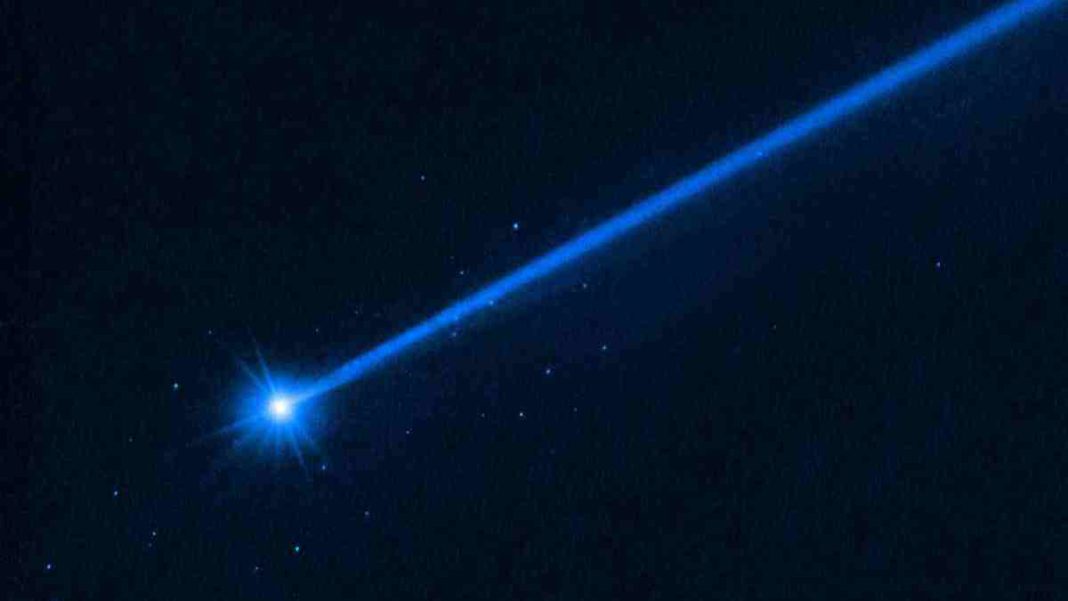UNITED STATES: Last year’s astonishing NASA mission, the Double Asteroid Redirection Test (DART), which intentionally impacted the asteroid Dimorphos, continues to yield astonishing results.
NASA’s Hubble Space Telescope has recently unveiled striking images of the resulting debris, shedding light on the aftermath of the impact and offering valuable insights into the dynamics of asteroids in our solar system.
On September 26, 2022, the DART spacecraft made history by crashing into the distant asteroid Dimorphos, causing a slight alteration to its orbit around the larger asteroid Didymos.
Now, astronomers have used the powerful Hubble Telescope to observe a swarm of boulders, potentially dislodged from Dimorphos during the high-velocity impact, drifting slowly into space.
The collision catapulted an impressive 37 boulders into the cosmos, ranging in size from one meter to a substantial seven meters (approximately three to twenty-two feet) across.
These boulders constitute a mere two percent of the loosely-held-together surface of Dimorphos, as estimated by scientists in a recent study.
The intriguing discovery has opened up prospects for future missions aimed at diverting life-threatening asteroids on a collision course with Earth.
The potential for these missions to release boulders during the redirection process presents new challenges for researchers to address and underscores the importance of understanding the impact dynamics.
Thankfully, these particular boulders pose no threat to Earth, drifting leisurely away from Dimorphos at a languid pace of approximately one kilometer (half a mile) per hour.
Such a sluggish trajectory means that even the European Space Agency’s Hera mission, set to arrive at the asteroid in late 2026 to assess the damage, will have a prime opportunity to observe these boulders up close.
Lead author of the study and planetary scientist at the University of California, Los Angeles, David Jewitt, aptly likened the dispersal of boulders to “a very slowly expanding swarm of bees,” highlighting the gradual and fascinating nature of the asteroid’s aftermath.
Hubble’s exceptional observation provides the first-ever glimpse into the consequences of impacting an asteroid and the resulting dispersion of materials.
The images reveal that DART created a substantial crater approximately 50 meters wide on Dimorphos, which measures 170 meters in its entirety.
Scientists are eagerly following the trajectory of these drifting boulders to unravel the mechanics of their launch from the asteroid’s surface.
The data gleaned from this investigation will further enhance our understanding of asteroid behavior, vital for developing strategies to protect Earth from potential cosmic threats.
The detailed findings of this groundbreaking study have been published in the esteemed Astrophysical Journal Letters, cementing its significance in the realm of planetary science.
As technology continues to advance, and space exploration progresses, humanity’s knowledge of our cosmic neighborhood expands, allowing us to unveil the secrets of the universe one celestial body at a time.
Also Read: NASA Perseverance Rover Uncovers Potential Building Blocks of Life on Mars



